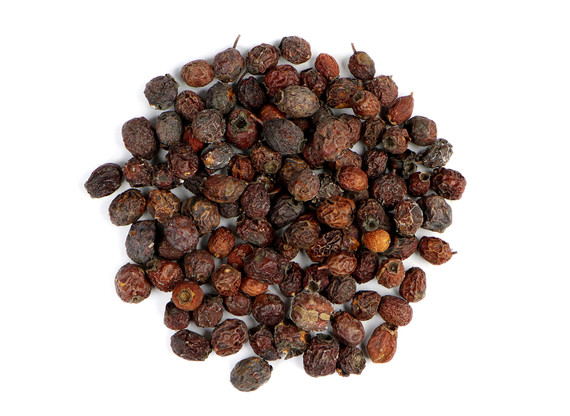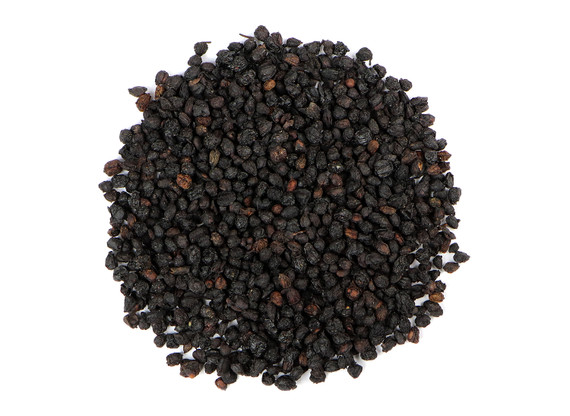Lycium barbarum is a common species of the genus Lycium that is found in lowland areas across Asia. The deciduous, woody tree is known for its bright red berries, which are enjoyed for their healthful properties. Lycii berries are almost entirely similar to goji berries, only with their growing regions being the largest discernable difference. Lycii berry, also referred to as wolfberry, can be eaten raw, steeped as tea, or incorporated into culinary recipes such as trail mix, desserts, and smoothies.
PLEASE NOTE! Goji berry and lycii berry are virtually the same. The only discernable difference between the two is goji is usually a high-altitude strain of Lycium, commonly found in the Himalayas, Nepal, and Tibet. Lycii berry is more commonly found in lowland areas. For trade purposes they are usually considered the same. Lycium barbarum belongs to the Solanaceae plant family.
Lycii berry, otherwise known to herbalists as goji, Chinese Wolfberry, or Chinese boxthorn, is a bright red, almost chewy berry with a taste very similar to raisins. It has been used as a general nutrient tonic (Yin tonic) for many years and Traditional Chinese Medicine (TCM) refers to it as a cooling tonic. TCM practitioners suggest that lycii should never be taken for acute colds or flu, because it will have the tendency to bring a sickness deeper. Whole berries can be eaten raw, as they have a pleasant taste. Or they can be included in food or prepared as a tea.
Precautions
No known precautions. We recommend that you consult with a qualified healthcare practitioner before using herbal products, particularly if you are pregnant, nursing, or on any medications.
This information has not been evaluated by the Food and Drug Administration. This product is not intended to diagnose, treat, cure, or prevent any disease. For educational purposes only.








